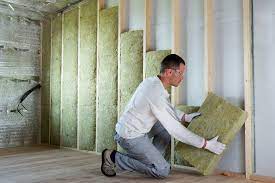External Wall Insulation systems are designed to increase the thermal performance of exterior walls without compromising aesthetics. These systems utilize expanded polystyrene, mineral wool, polyurethane foam, phenolic foam, and plaster to form an insulated external cladding. The system is topped with a cement-based or mineral or synthetic finish.
 Older homes are less likely to be insulated than newer ones. Many houses were built before the code required it. Before that, builders could opt not to insulate the walls. This means that many homes built before 1965 probably have only two inches of insulation. But if you’re looking to make significant energy savings, consider installing a wall insulation system in your home. Kindly visit Wall Insulation Chicago IL to find more information.
Older homes are less likely to be insulated than newer ones. Many houses were built before the code required it. Before that, builders could opt not to insulate the walls. This means that many homes built before 1965 probably have only two inches of insulation. But if you’re looking to make significant energy savings, consider installing a wall insulation system in your home. Kindly visit Wall Insulation Chicago IL to find more information.
The cost of installing wall insulation will vary depending on whether you’re building a new home or remodeling an existing one. If you’re building a new home, you can use any type of insulation you want, but the price will be largely determined by the materials used. However, if you’re remodeling a house, you have a limited number of options when it comes to insulation. In remodels, the biggest cost factor will be labor.
Traditional wall insulation typically comes in batts or rolls. You can order standard sizes and cut them yourself, but if you’re installing a new home, you might need to make minor adjustments to the dimensions. For example, if your studs aren’t quite four inches apart, you’ll need to cut the batts smaller to fit into the cavity.
While installing new insulation is relatively easy, it’s a lot more difficult to add insulation to an existing wall. You may have to remove the drywall to insert the new insulation, which is expensive and inconvenient. In addition, you’ll need to open up your walls. Luckily, there are many methods for installing insulation on existing walls.
The best way to determine if your walls need to be insulated is to have a home energy assessment. To do this, you must measure how much heat your home loses or gains. This is possible using a noninvasive method, such as an infrared camera test. Remember that building codes vary from state to state, so you should consult a contractor who understands your state’s regulations.
Aside from preventing heat loss and heat gains, wall insulation also helps control noise and protect your home from fires. Choosing the right type of wall insulation will help you achieve the best results for your home.